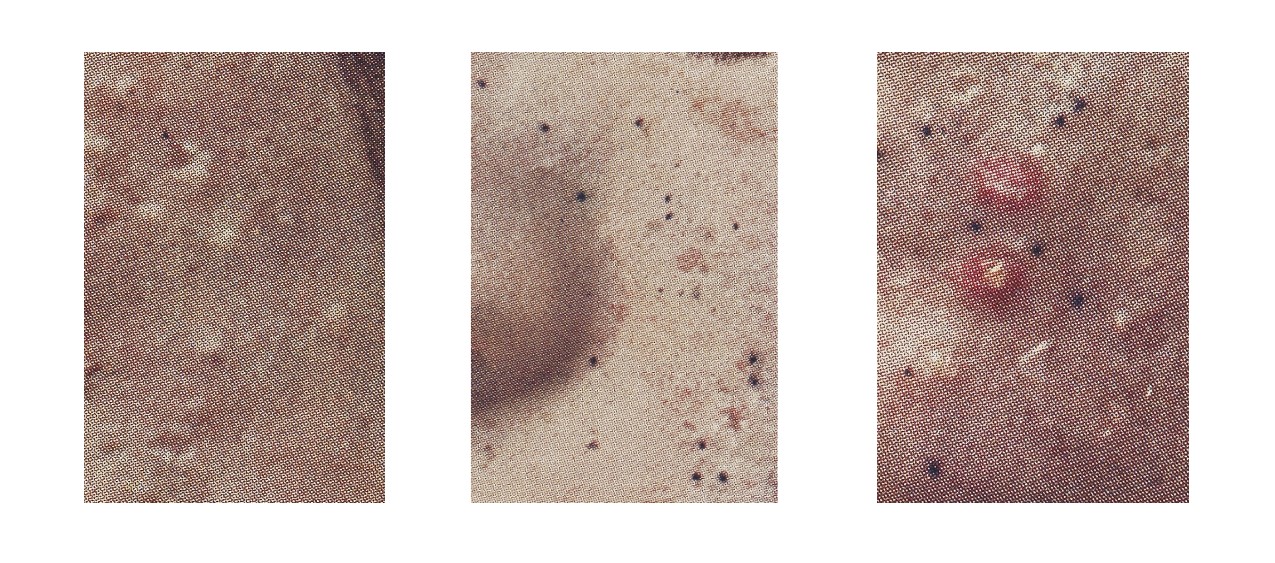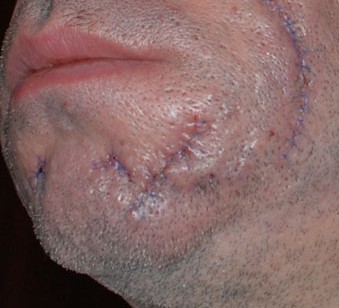Chapter 1 – Client Consultation and Analysis
1.2 Skin Analysis
In Hairstylist Level 1, you will have learned about various scalp and skin abnormalities. This chapter advances on that knowledge to cover specific skin issues of the face and nape that a barber/stylist will be required to recognize during the consultation, prior to performing a trimming or shaving service. Although many skin growths and blemishes are harmless in nature, they require special attention when performing a hair-removal service so as to avoid accidental laceration when using shears, trimmers, clippers, and razors that come into close contact with the skin.
In this chapter we will take a closer look at the following:
- Growths
- Blemishes
- Ingrown hairs
- Scars
- Skin sensitivity
Growths
Growths on the skin are caused by an accumulation of skin cells. Typically, growths appear as flat or raised with a varying degree of pigmentation from skin tone to black.
Growths are classified as either:
- Controlled: A benign growth that has not spread to other areas of the body.
- Uncontrolled: A malignant growth that has spread into neighbouring tissues or other areas of the body.
Controlled growths, such as benign moles or skin tags, are caused by factors such as genetics, viruses (i.e., warts), sun exposure, and diseases that are systemic in the body.
Moles

A mole is formed when the melanocytes produce coloured spots or marks on the skin’s surface. Moles can vary in colour from skin tone to black, and can have either a flat or raised appearance. Over time, moles may change in colour and shape. Therefore, it is recommended to monitor them for abnormalities.
When trimming or removing hair around a mole, work carefully. Protect or move the mole out of the way with your finger, if possible, while cutting or shaving so as to avoid an accidental injury.
Skin Tags

Skin tags can often be found on the neck. They are flesh-coloured flaps that are small and soft to the touch. Although harmless, care should be taken when removing hair near and around a skin tag. Use the same technique with skin tags as you did with moles.
Blemishes

A blemish appears as a spot, discoloration, or imperfection on the surface of the skin. The three most common blemishes that a barber/stylist will see on a client’s face or neck are whiteheads, blackheads, and pustules/pimples.
Although blemishes are generally not harmful, clients may be embarrassed or distressed by them. The appearance, development, and reoccurrence of most blemishes can be controlled by a healthy diet, professional skincare, and/or over-the-counter medicated products. If a client is unable to manage their skin, you can advise them to seek the advice of a physician or a dermatologist.
Ingrown Hairs

Ingrown hairs are the result of dead skin cells congesting the hair follicle. This causes the hair to grow sideways or turn back onto itself underneath the skin, rather than growing upward to the skin’s surface as expected. An ingrown hair typically appears as a small raised bump which will likely resolve itself over time. However, if an ingrown hair becomes inflamed or infected, it will bear a cyst-like appearance and may require antibiotic treatment.
Ingrown hairs can result from a shave service, if proper care is not taken. This issue will be discussed further in Chapter 4.
Scars

Scars are caused when the dermis layer of the skin is damaged. This damage can occur from an injury or from a blemish that did not heal correctly. Not all scars are cause for concern. However, if a scar is raised, the barber/stylist must take care not to apply excess pressure to the razor or trimmer as it passes over the scarred area during the service.
Skin Sensitivities
Due to the vast array of clients that a barber/stylist will see over the course of a week, it is quite likely that they will encounter clients that have skin sensitivities.
Signs of skin sensitivities include:
- Skin that flushes easily or has visible redness
- Skin that is blotchy or itchy
- Skin that has acute reactions to touch or temperature
- Skin that has acute reactions to skin care products
What causes skin sensitivities? Skin sensitivities can be caused by a variety of external or internal factors. Some examples are listed in the chart below:
| External Factors | Internal factors |
|---|---|
|
|
Considerations for treating sensitive skin during a barbering service:
- Hot towels are not advised if the skin is chapped, or particularly thin and sensitive.
- Take care when using astringent products, as they may be too harsh and cause discomfort to sensitive skin.
Media Attributions
- Black Mole by Делфина is licensed under a CC BY-SA 4.0 Licence.
- Skin Tags by Jmarchn is licensed under a CC BY 4.0 Licence.
- Blemishes by Acne Vulgaris, Wellcome Collection is licensed under a CC BY 4.0 Licence.
- Ingrown Hair by LBPics is licensed under a CC BY-SA 3.0 Licence.
- Scar by Themeparkphoto is licensed under a CC BY-SA 3.0 Licence.
Skin cells responsible for giving the skin its colour pigment.

